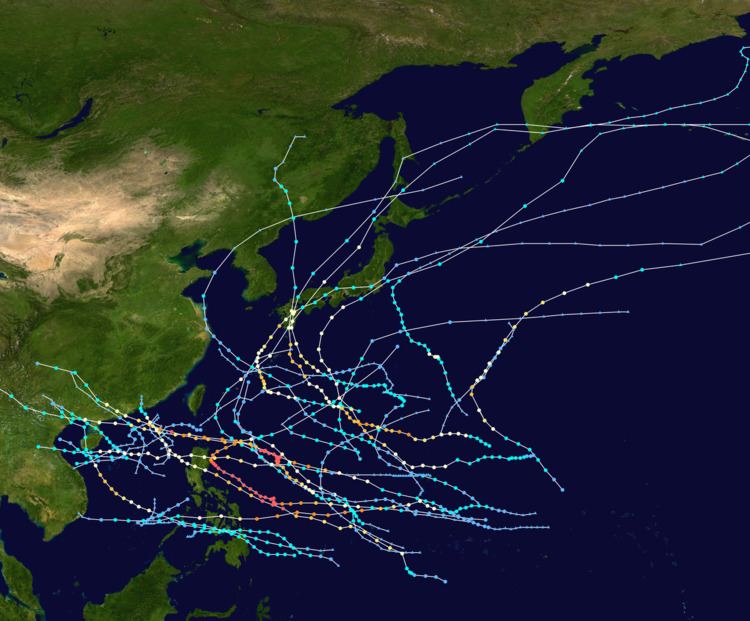First system formed March 1, 1954 Name Ida Total storms 19 | Last system dissipated December 26, 1954 Total depressions 33 Typhoons 15 | |
 | ||
The 1954 Pacific typhoon season has no official bounds; it ran year-round in 1954, but most tropical cyclones tend to form in the northwestern Pacific Ocean between June and December. These dates conventionally delimit the period of each year when most tropical cyclones form in the northwestern Pacific Ocean.
Contents
The scope of this article is limited to the Pacific Ocean, north of the equator and west of the international date line. Storms that form east of the date line and north of the equator are called hurricanes; see 1954 Pacific hurricane season. Tropical Storms formed in the entire west Pacific basin were assigned a name by the Fleet Weather Center on Guam.
Typhoon Grace
Typhoon Grace struck the Southern Japanese islands of Kyūshū and Shikoku. 28 people were killed and 33 were missing.
Typhoon June
Typhoon June struck the Southern Japanese hitting the area west of Kanto especially hard. 107 people were killed and 39 were missing.
Typhoon Lorna
Typhoon Lorna brushed the southern coast of the Japanese island of Shikoku. 34 people were killed and 20 were missing.
Marie
Typhoon Marie had a minimum pressure of 956 mb and a maximum windspeeds of 85 mph. Marie crossed the southern islands of Kyūshū and Shikoku before turning northeast and striking Hokkaidō island. Marie caused the ship Toya Maru to sink in the Hokkaidō Strait. 1,361 people were killed and 400 were left missing.
Typhoon Pamela
On October 27, Typhoom Pamela formed as a tropical depression. Pamela reached a peak of 900 mbar and 175 mph on November 1 and reached a secondary peak of 935 mbars on November 5. Pamela was one of two storms that reached Category 5 super typhoon status in the South China Sea, with the other being Typhoon Rammasun of 2014.
